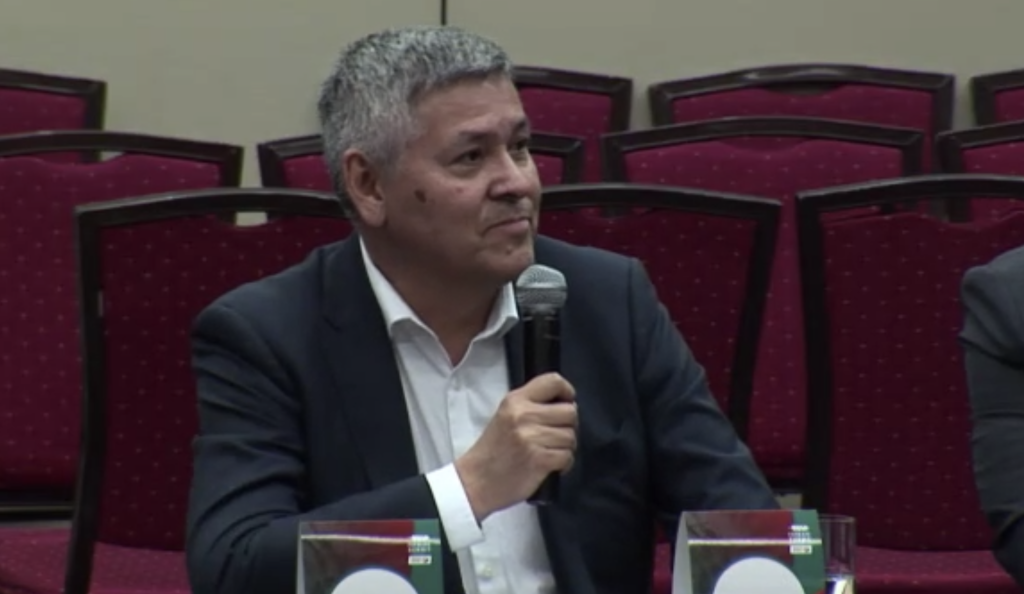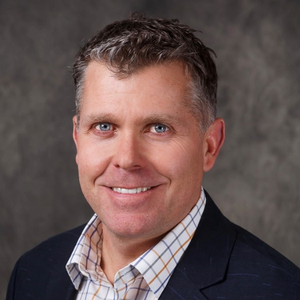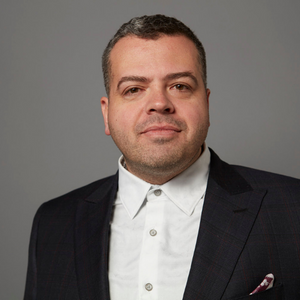
News
Forward Summit tackles the power of procurement
June 8, 2022 By Andrew Snook
 Moderator Philip Ducharme, vice-president of entrepreneurship and procurement for the Canadian Council of Aboriginal Business (CCAB). Photo by Andrew Snook
Moderator Philip Ducharme, vice-president of entrepreneurship and procurement for the Canadian Council of Aboriginal Business (CCAB). Photo by Andrew Snook A roundtable discussion focused on the power of procurement took place at the 2022 Forward Summit: Empowering Indigenous Economies, which was held in association with the Canadian Council of Aboriginal Business at the Grey Eagle Resort & Casino Event Centre just outside Calgary on Tsuut’ina Nation, Treaty No. 7 Territory.
The panel discussion focused on Indigenous inclusion in all aspects of supply chain across various industries. The panel was comprised of moderator Philip Ducharme, vice-president of entrepreneurship and procurement for the Canadian Council of Aboriginal Business (CCAB); and the following speakers: LNG Canada asset supply chain manager Aubrey Regan; Chandos Construction’s national director of Indigenous strategies Tim Laronde; Public Services and Procurement Canada (PSPC) outreach and procurement lead Jenny Yu; and Aaron Lambie, president and CEO of Social Awareness Group.
LNG opportunities
The first question was posed to Regan asking if LNG Canada has a strategy in place to increase procurement opportunities for Indigenous businesses? And if so, could he provide a quick overview of that strategy.
The Kitimat, B.C.-based $40-billion Kitimat LNG project is being built by JGC Flour (JFLV) and is owned by Shell (40 per cent), PETRONAS (25 per cent), PetroChina (15 per cent), Mitsubishi Corporation (15 per cent) and KOGAS (five per cent). Once construction is completed and the facility is fully commissioned, it will have the capacity to export approximately 14 million tons of LNG annually with the potential for further expansion.

Aubrey Regan
“LNG Canada has commitments, whether it be directly through us or our contractors to deliver procurement and employment opportunities to Indigenous people who are in the area,” Regan says. “So, one of the things that that we’ve done over time here is that since the inception of the project, and as of March 2022, the total spend in B.C. to this point has been roughly $3.7 billion, of which $2.9 billion can be attributed to Indigenous or local communities.”
He says these opportunities for Indigenous businesses and local communities were made possible through open communication that the company has between Indigenous-owned businesses, partners, business development, and the economic development people at the participating Nations.
“We sit down on a regular basis with the business development economic development folks from the Nations and we give them an outlook. We call it a procurement opportunity notice, and it’s a six-month outlook on any opportunities that are going to be coming up directly with us,” Regan says. “In the past, those opportunities were through our main contractor JFLV – a joint venture between JGC and Fluor. We’re very clear on what the expectations are as far as those scopes go. In return, we get business lists from the Nations. And so, it helps us marry up opportunities or identify gaps where we might be able to close those opportunities by working together as we go through the RFP process.”
Indigenous-owned businesses are not always successful going through the RFP process, so upon request from any Nation, Regan says LNG Canada is happy to sit down and do a debrief to understand where some of the shortcomings might have been, or where gaps can be closed to make them more competitive in the future.
“Underpinning all of that, there’s a set of expectations that we have, whether it be ethics and compliance, code of conduct, pre-qualifying from a financial perspective, and arguably, more importantly, an HSSE perspective. So open and clear communication, that transparency goes a long way, just so that we can align on expectations,” Regan says.
Constructing partnerships
The same question was then asked to Tim Laronde about strategies in place to increase procurement opportunities for Indigenous businesses at Chandos Construction.

Tim Laronde
“One of our mandates from the last five years has been to always work and have a social impact on our suppliers and our clients. And one of the things that we do is we reach out to equity seeking groups who need that extra help or may not have a fair advantage in terms of being a supplier. Indigenous falls into that equity seeking group,” he says. “The longest time, Indigenous businesses had not had a fair shake, and a fair opportunity at a lot of the different projects.”
Laronde joined Chandos in January 2021 under the newly created position of national director for Indigenous strategies and has been helping the company focus on working directly with First Nation communities.
“We will have probably 100 to 120 projects ongoing across Canada at one time. And one of the things that we work through with our estimators and with our RFP system is making sure that there is an Indigenous component built into our RFP responses,” he says.
One question posed to clients if they’re not an Indigenous nation is, “What can we do to help the Indigenous communities in your traditional territory?”
“What we’ll do is we’ll reach out to those communities and make sure that as a GC, a general contractor, we want to make sure that there’s opportunities for subtrades and partners that may have Indigenous-owned businesses or maybe community-owned businesses as well. So, it’s something that we continually focus on. And what’s really interesting is since we’ve been doing this, we now have direct projects with Nations themselves, and they set the bar pretty high in terms of what they want for Indigenous content,” Laronde says.
Federal spending
In 2019, a mandate letter went out to the Minister of PSPC to increase Indigenous procurement spend within the federal government to a minimum of five per cent. Ducharme asked Yu what the federal government is currently doing to be able to meet that five-per-cent target.
As one of Canada’s largest buyers of goods and services, Yu responded that the Government of Canada wants to continue leveraging that procurement power and elevating opportunities and increasing opportunities for equity seeking groups.
She says that one of the biggest initiatives launched as part of the 2021 federal budget was that there have been funds set aside for PSPC to work with Indigenous Services Canada and the Treasury Board of Canada Secretariat to make sure that the minimum five per cent target of annual spending is spent on purchasing goods and services dedicated to purchasing from Indigenous businesses.

Jenny Yu
“And with those funds, we also want to be able to put in more resources to meaningful engagement and create increasing capacity to help us all collectively meet this target,” she says, adding that part of that meaningful engagement is helping people understand federal procurement.
“Let’s start by first of all, helping everybody understand how the government buys goods and services first, and then provide you with the tools and resources and contact points to help you navigate it. And then use that information to explore whether these opportunities are fitting for you,” she says.
Social procurement and supplier diversity
Ducharme said that in addition to Indigenous procurement, there is also a social procurement and supplier diversity that aims to increase procurement opportunities for equity seeking groups. He then asked Lambie is he sees a difference in how this is approached in either private or public procurement.
Lambie said that private companies and publicly traded companies can “basically chart their own path” on want they choose to spend with Indigenous businesses and for other social procurement strategies, but public procurement is another matter.

Aaron Lambie
“Municipalities get and know that social procurement is something that’s important, but they’re just dipping their toes into the water,” he said. “The City of Toronto is sourcing or awarding contracts of $3,000 to $100,000. That’s not a ton of cash. City of Calgary: $5,000 to $75,000; Brampton: $25,000 to $100,000. And these are for organizations that have a social purpose. And so, when we think about how do we do better with Indigenous procurement or social procurement. We really need to figure out a way of not limiting the opportunities of those organizations to such small buckets of cash in such small projects and opportunities. We need to figure out how organizations or municipalities or provinces, open up the whole supply chain – have set asides for again, five per cent of the provincial level, five per cent of municipal level or beyond that.
Ducharme added that as Indigenous people, they are rights bearing people that are constitutionally recognized, and so, Indigenous procurement needs to be almost a standalone from social procurement.
“When we get lumped into social procurement or supplier diversity, quite often we are at the bottom of the barrel. So, I think one of the ways that we can all work together is to ensure that Indigenous procurement is almost a standalone, and that every one of these organizations does look at Indigenous procurement and try and ensure that we have the opportunities,” he said. “Social procurement has a place, but we want to make sure that Indigenous procurement does not get lost within all these other ones.”
To watch The Power of Procurement roundtable discussion on-demand, visit www.forwardsummit.ca.
Photos courtesy of Forward Summit/Connect Partnership Group Ltd.
Print this page